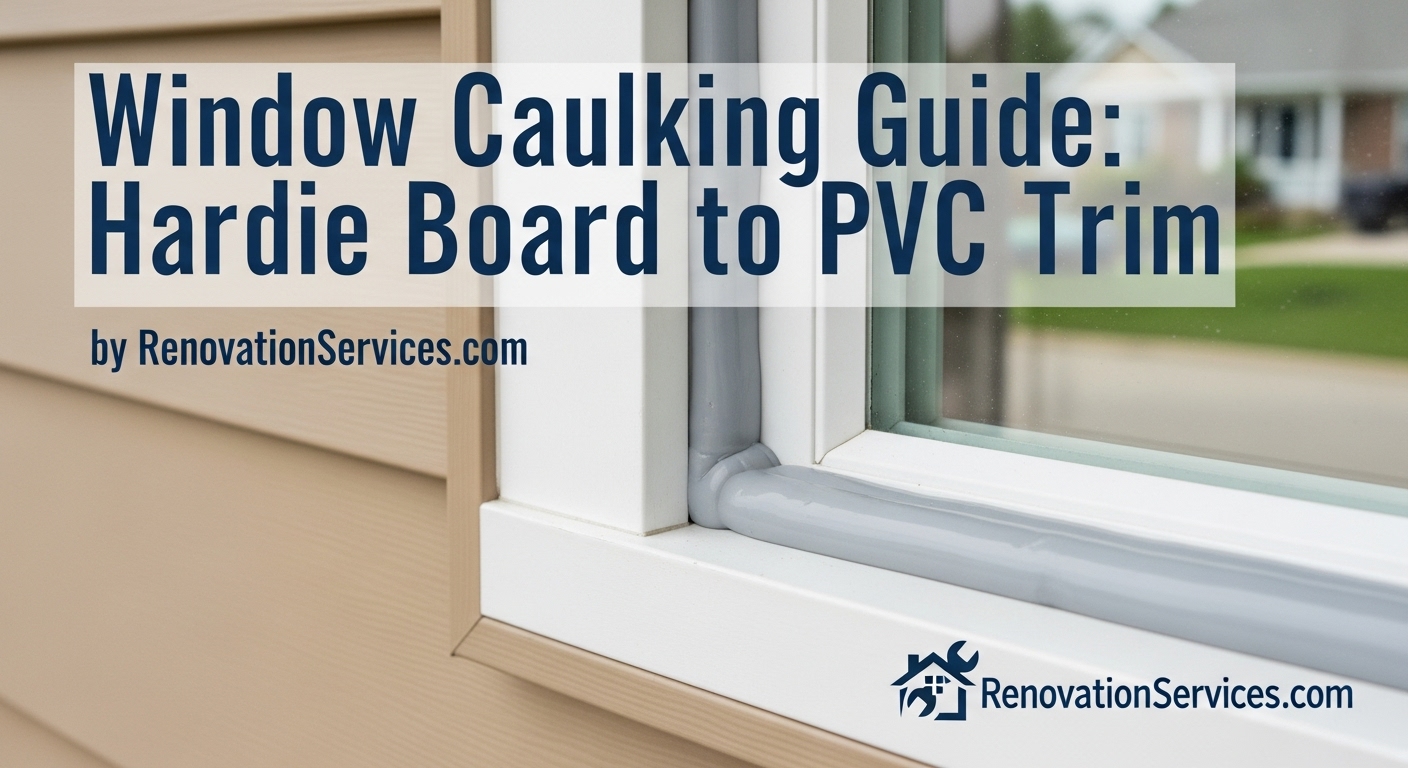Window Caulking Guide: Where to Caulk (And Where NOT To)
Stop! Before you grab that caulk gun, read this. Sealing the wrong gap can trap water inside your walls. Our pro guide explains Zone A, B, C, and D.
The Million Dollar Mistake
We see it every week in Queens and Brooklyn. A homeowner wants to be diligent. They see a gap around their window. They think, “I should seal that up to keep the rain out.” So they buy a tube of caulk and seal every single crack they find.
Two years later, the wall below the window is soft. The paint is bubbling. There is mold in the drywall. Why? Because they caulked the “exit ramp.”
Windows are designed to manage water, not just block it. Some gaps are meant to be open. If you seal them, water gets in (because it always does eventually) but cannot get out. It sits there and rots your framing. Today, we are going to solve the puzzle of the A, B, C, and D zones on your window.
Seeing Water Stains Under Your Windows?
If your drywall is soft or stained, you might have a flashing failure. Caulking won’t fix it. You need a leak inspection.
Call us at: 347-455-1741
Email: info@renovationservices.com
Get a Leak InspectionThe Answer Key: Zones A, B, C, and D
Based on the common window anatomy, here is the definitive guide on what to seal.
Zone A: The Vertical Trim (Sides)
VERDICT: YES
Why? This is the joint where your PVC trim meets your Hardie board siding. Rain hits the side of your house and runs down. You do not want it running behind the trim. Caulk this line all the way from top to bottom.
Zone B: Trim-to-Sill Joint
VERDICT: YES
Why? This is where the vertical casing meets the window sill. This joint should be watertight to prevent water from getting into the corner of the window buck.
Zone C: The Weep Hole
VERDICT: NO! NEVER!
Why? Look closely. That little slot is a drain. Windows have a track that water can get into. It is designed to flow out of these holes. If you caulk this shut, the track fills up like a bathtub and spills over into your living room.
Zone D: Sill-to-Siding (The Bottom)
VERDICT: NO (Usually)
Why? This is the most controversial one. Generally, you should leave a gap here. This is the “escape hatch” for any water that gets behind the siding or window. If you seal the top (Head Flashing) and sides (Zone A), you must leave the bottom open so the wall can breathe and drain. If you caulk this solid, you create a swimming pool inside your wall.
Need Hardie Board Repair?
Fiber cement siding is durable, but only if installed right. We specialize in Hardie Board and PVC trim installation for NYC homes.
Get a Siding QuoteThe Importance of Flashing
A smart commenter mentioned, “The flashing underneath is much more important.” They are 100% right. Caulk is just the first line of defense. It eventually cracks. Flashing is the permanent waterproofing.
Before the window goes in, there should be a waterproof tape (like flashing tape) wrapping the sill and sides. There should be a metal “drip cap” above the top trim. This metal piece kicks water out away from the window. If you are missing the drip cap, no amount of caulk will save you.
If you are unsure if your windows were flashed correctly, check our guide on identifying water damage risks.
Choosing the Right Ammo: Silicone vs. Polyurethane
You cannot just grab the cheapest tube. Hardie board (cement) and PVC trim expand and contract differently.
The Best Choice: OSI Quad Max
This is what the pros use. It is a hybrid sealant. It stays flexible forever. It sticks to wet surfaces. It comes in hundreds of colors to match your siding.
The Runner Up: 100% Silicone
Silicone is waterproof, but it has a problem: You cannot paint it. If you smear silicone on your Hardie board, paint will peel off it forever. Only use this if you never plan to paint that spot.
Avoid: Acrylic Latex (Painter’s Caulk)
This is for inside. Outside, it will crack in one winter. Do not use it on your exterior.
Drafty Windows? High Bills?
If sealing the cracks doesn’t help, your windows might be old and failing. Upgrade to energy-efficient windows and save money.
Call us at: 347-455-1741
Get Window OptionsStep-by-Step: How to Caulk Like a Pro
- 1. Prep is Key: Scrap away old, cracked caulk. Use a brush to get the dust out. Wipe it down with a rag. New caulk won’t stick to dirt.
- 2. Cut the Tip: Cut the nozzle of the tube at a 45-degree angle. Don’t make the hole too big. Start small; you can always cut more.
- 3. Push, Don’t Pull: Push the gun forward as you squeeze. This forces the caulk into the gap, rather than just laying it on top.
- 4. Tool It: Use a caulk tool or a soapy finger to smooth the bead immediately. This ensures a tight seal.
- 5. Skip the Bottom: Remember, stop at the bottom corners. Leave that bottom horizontal edge open for drainage!
Real-World Scenarios
Scenario 1: The Overflowing Track
You see water spilling over the inner sill during a heavy rain. Cause: Weep holes are clogged or caulked over. Fix: Clear the blockage with a wire or remove the bad caulk.
Scenario 2: The Rotting Sill
The wood under your window feels soft. Cause: Water got in at the top corners but couldn’t get out at the bottom because it was caulked shut. Fix: Remove the caulk at the bottom. You may need to replace the wood.
Scenario 3: The Draft
You feel cold air coming in around the trim. Solution: This is where you check Zone A (Verticals). If the caulk is cracked, scrape it out and re-seal with high-quality polyurethane.
Frequently Asked Questions
Should I caulk the top of the window trim?
It depends. If there is a metal drip cap flashing (a piece of metal shaped like an ‘L’ or ‘Z’), do NOT caulk the gap between the metal and the siding above it. That gap lets water drain out. You CAN caulk between the window trim and the metal cap itself.
How often should I check my window caulk?
Inspect it once a year, preferably in the fall before the freeze. Look for cracks, gaps, or peeling. Water freezing in a crack will make it much bigger very fast.
Can I use foam sealant instead?
Low-expansion foam (like Great Stuff Window & Door) is great for the inside gap between the window frame and the studs. Do not use it for the exterior trim joints. It looks messy and degrades in sunlight.
Is lead paint a risk?
If your home was built before 1978, old layers of paint might contain lead. Be careful when scraping old paint. Check EPA lead safety guides.
Final Thoughts
Water is the enemy of your home. Your windows are the armor. By knowing where to caulk (sides) and where to leave open (bottom and weep holes), you ensure your armor works correctly. It allows water to shed off without getting trapped inside.
If you are unsure, it is always better to ask a pro than to seal moisture inside your walls.
Not Sure If It’s Done Right?
Renovations are expensive. Don’t let a small mistake cause big damage. We can inspect your exterior envelope and fix sealing issues.
Call us at: 347-455-1741
Email: info@renovationservices.com
Speak to a Pro




